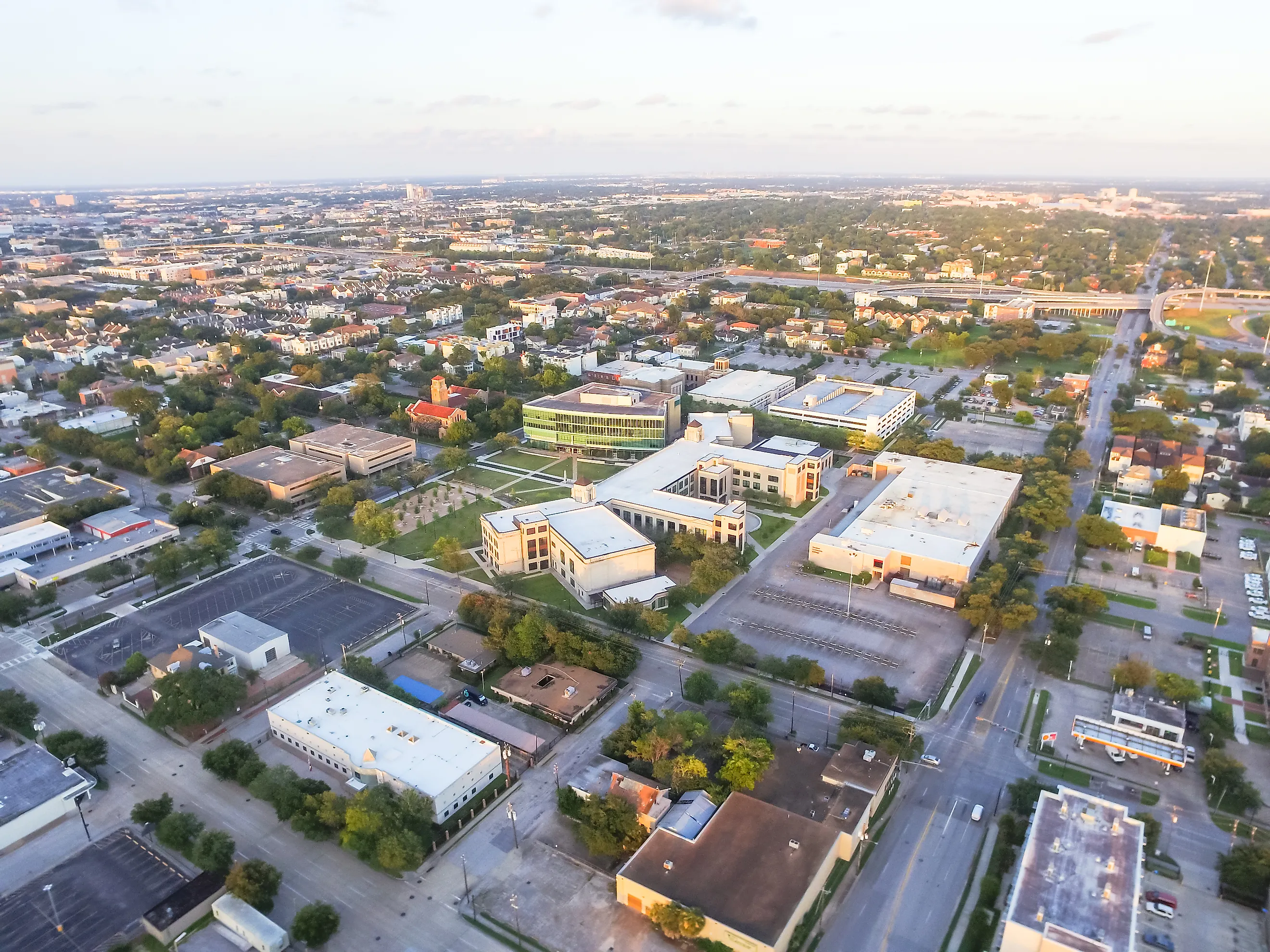
The 6 Best Houston Neighborhoods To Call Home In 2025
Here's what surprises most people about Houston: America's fourth-largest city offers some of the country's most diverse, dynamic, and affordable neighborhoods. Sure, the city gets a bad rap for sprawl and humidity, but that misses the real story. Houston delivers everything you'd expect from a major metropolitan area—world-class dining, cutting-edge arts, booming job markets—without the crushing housing costs that have made cities like Austin and Dallas increasingly unattainable.
From tree-lined streets in historic districts where million-dollar mansions sit alongside charming bungalows, to revitalized areas where young professionals walk to craft breweries and farmers' markets, Houston's residential landscape offers something for every lifestyle and budget. What makes Houston special isn't just the variety, but how its top neighborhoods maintain distinct character while embracing the cultural fusion that makes the city one of America's most international destinations.
Here are six neighborhoods where Houston's energy, diversity, and opportunity create some of the most compelling places to call home.
The Heights
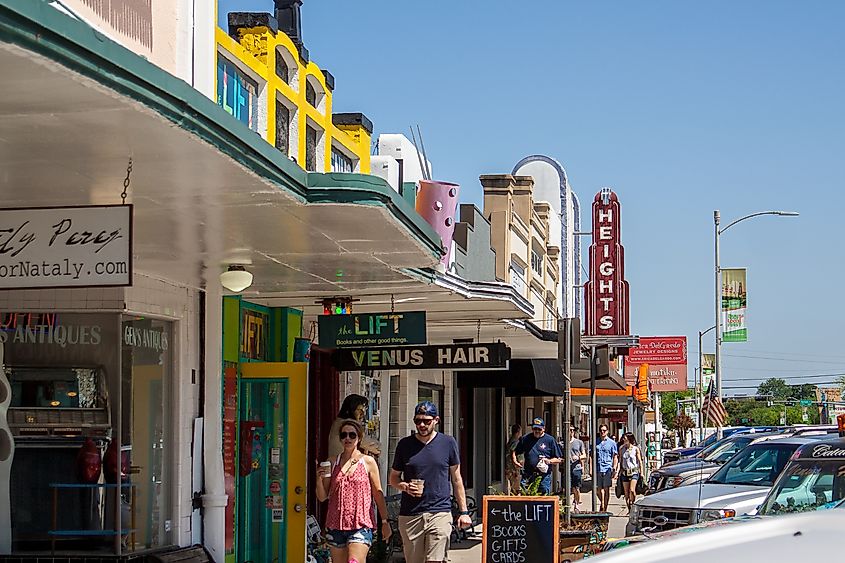
Just northwest of downtown, The Heights represents everything people love about Houston when they discover it beyond the freeways and strip malls. This historic neighborhood has undergone one of the city's most dramatic transformations, evolving from a working-class area to Houston's premier destination for young professionals and families seeking walkable urban living with genuine character.
The transformation centers around 19th Street, which has become Houston's answer to Brooklyn's Atlantic Avenue or Nashville's Music Row. Here, century-old homes have been converted into trendy restaurants, craft breweries, and boutique shops that create a genuinely pedestrian-friendly environment rare in car-centric Houston. Weekend farmers' markets, outdoor concerts, and food truck gatherings generate the kind of community energy that makes neighborhoods feel alive rather than just residential.
Housing in The Heights spans an impressive range, from carefully restored Victorian cottages and Craftsman bungalows to sleek modern townhomes that respect the neighborhood's scale while offering contemporary amenities. Many properties feature the large lots and mature trees that create natural cooling during Houston's intense summers, while new construction often incorporates elements like wide porches and architectural details that honor the area's historic character.
What makes The Heights special is how it balances preservation with progress. Long-time residents coexist with newcomers, historic homes stand alongside thoughtful infill development, and the neighborhood maintains its essential character while embracing change. The result feels authentically Houston—diverse, entrepreneurial, and constantly evolving.
The Heights attracts creative professionals, young families, and anyone who values walkability, community character, and proximity to downtown without downtown living. It's where Houston proves that sprawling Sun Belt cities can create genuine neighborhood experiences when residents demand better than suburbia.
Montrose
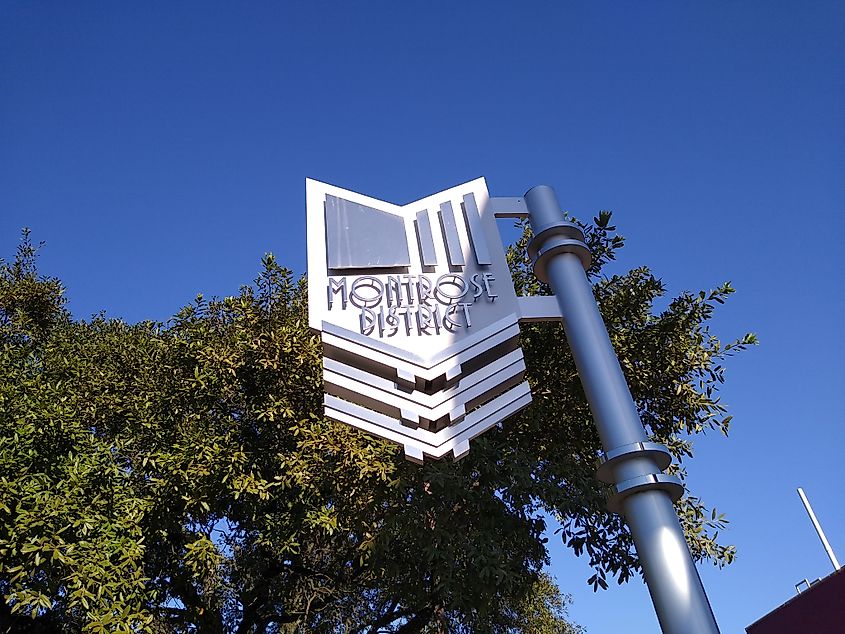
If Houston has a creative soul, it beats strongest in Montrose. This eclectic neighborhood near downtown has long served as the city's bohemian headquarters, where artists, musicians, and free spirits gather in an area that celebrates diversity and creativity over conformity. While gentrification has changed some aspects of Montrose, it remains Houston's most authentically alternative neighborhood.
Westheimer Road cuts through the heart of Montrose, lined with vintage shops, record stores, art galleries, and restaurants that reflect the neighborhood's anything-goes attitude. From longtime institutions like Poison Girl and Anvil Bar & Refuge to newer establishments pushing Houston's culinary boundaries, Montrose offers nightlife and dining options you won't find in the suburbs. The area's diverse community has deep roots here, creating an atmosphere of acceptance and celebration that attracts residents across all demographics.
Housing in Montrose ranges from converted apartments in commercial buildings to restored bungalows and contemporary townhomes. Many properties feature the kind of architectural quirks and artistic touches that reflect residents' creative sensibilities—murals, sculpture gardens, and the occasional art installation that blurs the line between home and gallery. Rental options abound, making the neighborhood accessible to artists and young professionals just starting their careers.
The Museum District's proximity adds cultural gravitas to Montrose's grassroots arts scene, while Hermann Park provides green space and recreational opportunities just minutes away. The neighborhood's central location offers easy access to downtown, the Medical Center, and other major employment areas.
Montrose attracts artists, young professionals, and anyone who values creativity, diversity, and urban energy over suburban predictability. It's where Houston shows its most authentic, unpolished face—and residents wouldn't have it any other way.
Rice Village

Adjacent to Rice University, Rice Village successfully bridges the gap between college town energy and sophisticated urban living. This compact, walkable neighborhood offers something unique in Houston: a genuine pedestrian scale where students, young professionals, and established families share sidewalks, parks, and local businesses.
The Village's commercial district along University Boulevard provides the kind of walkable retail environment that most Houston neighborhoods lack. Local restaurants, boutique shopping, and service businesses create opportunities for serendipitous encounters and community connections. The presence of Rice University students adds energy and cultural programming, while the area's established residential base provides stability and community investment.
Housing options reflect the neighborhood's diverse population, from apartment complexes that attract students and young professionals to substantial single-family homes that house faculty families and established residents. Many properties feature the architectural details and mature landscaping that create neighborhood character, while newer developments often incorporate contemporary design elements that respect the area's pedestrian scale.
Rice University's proximity brings both benefits and challenges—world-class cultural events, lectures, and athletic programs are practically at residents' doorsteps, but football weekends and student activities can disrupt the neighborhood's usual rhythm. Most residents consider this a fair trade for living in one of Houston's most intellectually vibrant communities. The neighborhood's central location provides excellent access to the Medical Center, Museum District, and downtown via light rail.
Katy

About 30 miles west of downtown Houston, Katy represents suburban living done right. This rapidly growing area has managed to maintain its small-town character while accommodating explosive population growth, creating master-planned communities with excellent schools, abundant amenities, and a family-friendly atmosphere that attracts residents from across the metropolitan area.
Katy's reputation rests largely on its exceptional school district, consistently ranked among Texas's best. The combination of excellent academics, competitive athletics, and robust extracurricular programs draws families willing to commute to central Houston for access to educational opportunities that rival private schools elsewhere. New schools continue opening to serve the area's growing population, maintaining the small class sizes and community focus that make Katy schools so desirable.
Housing in Katy includes everything from starter homes in established neighborhoods to luxury estates in gated communities. Many developments feature amenities like community pools, parks, and walking trails that create gathering places and recreational opportunities within walking distance of home. Architectural styles lean toward traditional and contemporary designs, often with the large lots and attached garages that define modern suburban living.
The historic downtown Katy area maintains its railroad heritage with antique shops, local restaurants, and community events that celebrate the area's agricultural past. Meanwhile, newer commercial developments along major corridors provide extensive shopping, dining, and entertainment options that reduce dependence on trips to central Houston.
Katy attracts families that prioritize education, safety, and community involvement. The area offers suburban comfort with small-town values, excellent schools, and big-city employment access. For families seeking the ideal balance of growth opportunities and community stability, Katy delivers everything on the suburban wish list.
Midtown
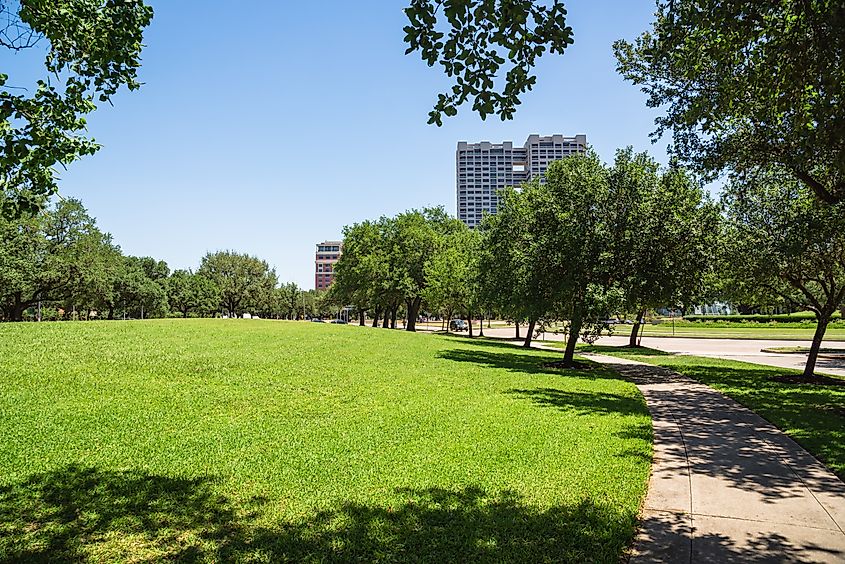
Between downtown and the Museum District, Midtown represents Houston's most successful experiment in high-density urban living. This rapidly evolving neighborhood combines the energy of city living with the convenience and amenities that make Houston attractive to young professionals.
The neighborhood centers around Main Street, where the light rail connects residents to downtown, the Museum District, and beyond without requiring car ownership. Mixed-use developments line the corridor, featuring ground-floor restaurants, bars, and retail with residential units above. This European-style development pattern creates the kind of street-level activity that makes neighborhoods feel alive throughout the day and evening.
Housing in Midtown emphasizes urban living, with high-rise condominiums, modern townhomes, and apartment complexes offering resort-style amenities like rooftop pools, fitness centers, and concierge services. Many developments feature contemporary designs with floor-to-ceiling windows, modern finishes, and outdoor spaces oriented to capture downtown skyline views. The emphasis on walkability means many residents can access daily needs without relying on cars.
The neighborhood's dining and nightlife scene attracts residents from across Houston, creating a social energy that extends well beyond the residential community. From upscale restaurants to casual bars and coffee shops, Midtown offers options for every mood and occasion within walking distance of home.
Midtown attracts young professionals, empty nesters, and anyone seeking urban convenience with modern amenities. The neighborhood appeals to those who want to experience Houston's energy firsthand while living in a walkable environment that prioritizes community connections over suburban isolation.
Sugar Land
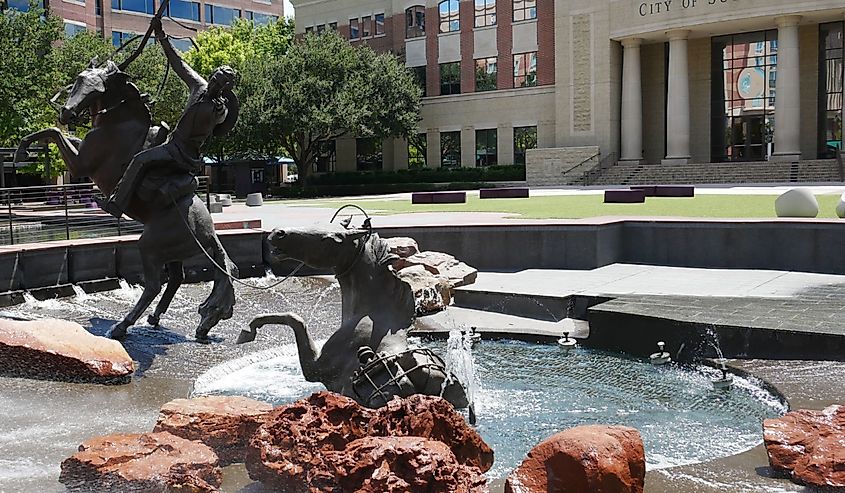
Southwest of Houston, Sugar Land stands as a prime example of successful master-planned community development. This city-within-a-city combines exceptional schools, abundant amenities, and diverse housing options in a setting that attracts families from across the metropolitan area seeking suburban excellence with urban accessibility.
Sugar Land's reputation rests on multiple foundations, starting with the consistently top-rated Fort Bend School District. The combination of academic excellence, competitive athletics, and comprehensive extracurricular programs creates educational opportunities that rival the best private schools. New schools continue opening to serve the area's diverse, growing population while maintaining the high standards that make Sugar Land schools a primary draw for families.
The area features numerous master-planned communities, each with its own character and amenities. From First Colony and Sugar Creek to newer developments, these communities offer everything from starter homes to luxury estates, often with amenities like golf courses, community centers, pools, and extensive walking trails. Town Square provides a pedestrian-friendly commercial district with shopping, dining, and entertainment options that create gathering places and reduce dependence on trips to central Houston.
The area attracts professionals working in Houston's energy, medical, and technology sectors who prioritize family amenities, educational excellence, and community safety. Sugar Land delivers suburban comfort with international flair, master-planned convenience with genuine community character. For families seeking the ideal balance of opportunity and stability, Sugar Land represents suburban living at its most sophisticated.
Finding Your Place in Houston
What makes Houston special isn't just the variety of neighborhoods, but how they maintain distinct character while embracing the cultural fusion that makes the city one of America's most international destinations. In an era when many major cities have priced out their own residents, Houston proves that growth and affordability can coexist.
Houston offers something increasingly rare in American metropolitan areas: neighborhoods where teachers and executives, artists and engineers, newcomers and multi-generational families can all find their place. As H-Town continues evolving, these neighborhoods represent the best of what draws people to Texas: opportunity without limits and the freedom to define success on your own terms.











